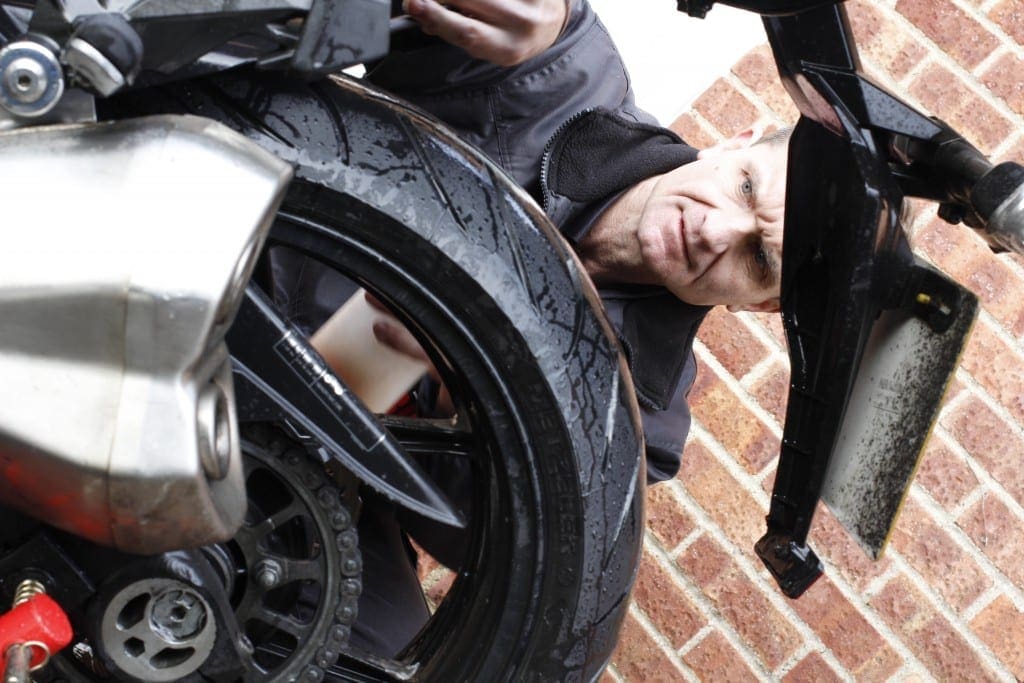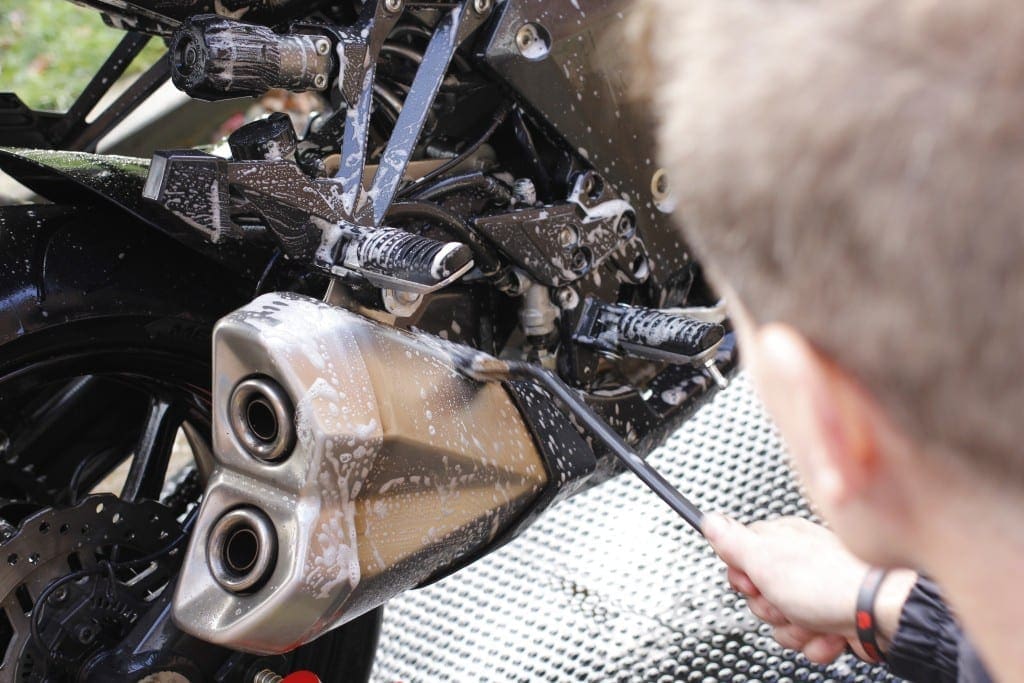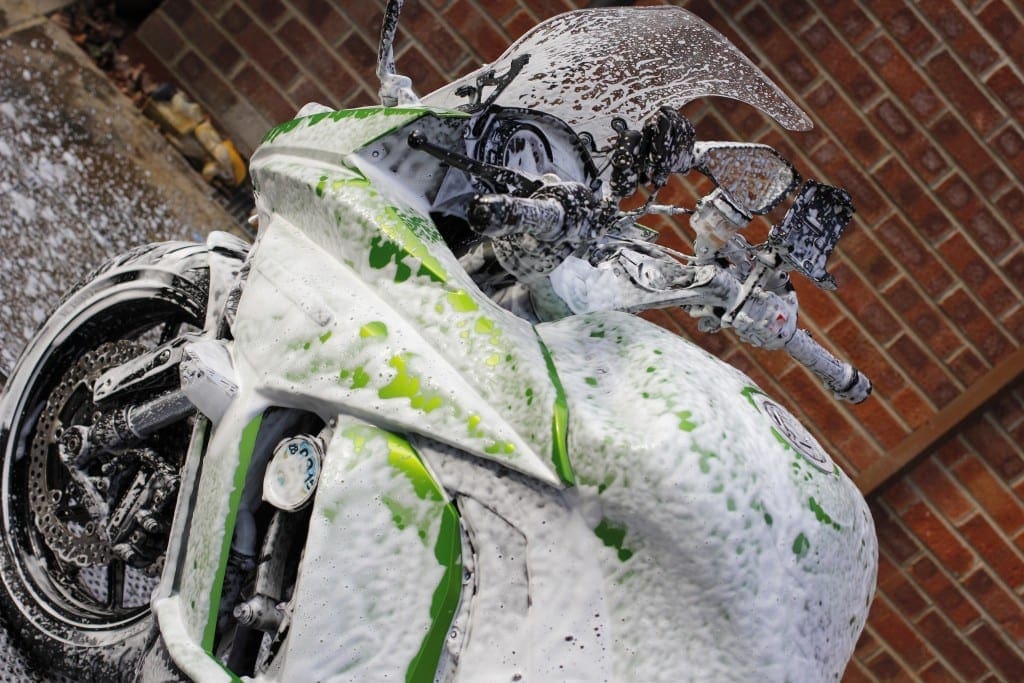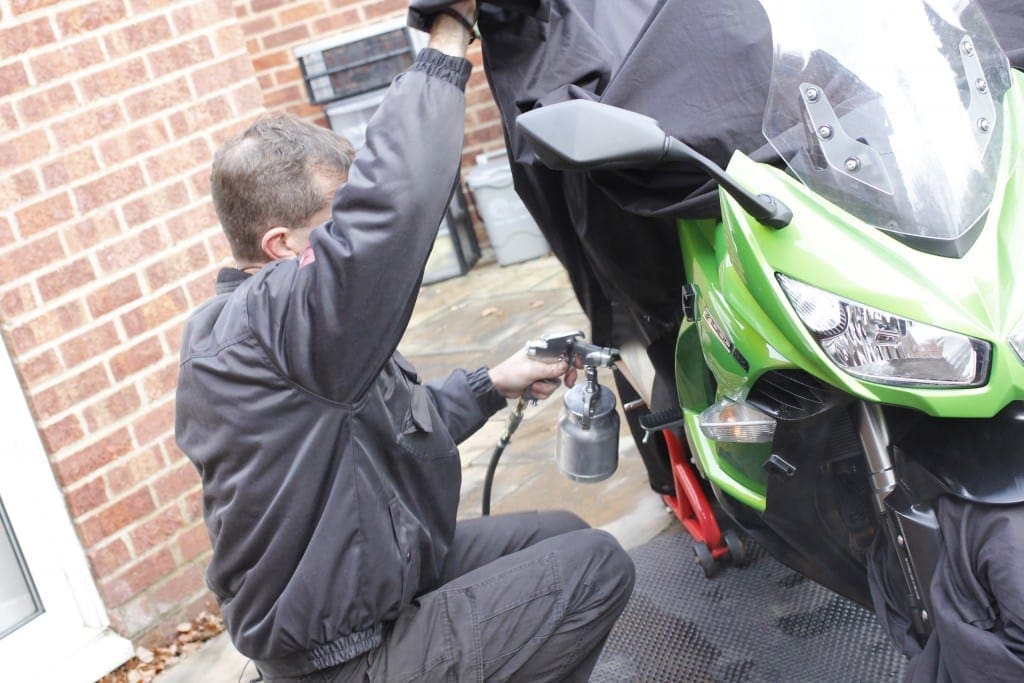By Chris Moss
A lot of us aren’t fans of cleaning our bikes. All Year Biker is though. And they have a specific treatment plan to remedy years of neglect.
Keeping a motorcycle clean and in good cosmetic shape can be quite a science. Doing it really well requires the correct procedures and appropriate products. And if you hate cleaning bikes as much as I do, get in touch with All Year Biker.
I wanted to find out what the protection system could mean for my bike. All Year Biker ‘operator’, Roy spent three hours doing his magic and the results were a revelation.
My bike ended up cleaner than ever, and I learnt just about everything there is to know about cosmetic bike care and protection.
It all began with AYB’s Alan Grace weighing up the bike’s condition. Being as experienced as he is, as both a very keen motorcyclist himself (you can’t work for AYB unless you ride a bike), and the beneficiary of Roy’s four full days of thorough training and appraisal (if you can’t do the job or liaise with customers well enough, you don’t get hired) Alan inspected the bike closely. He pointed out key areas he needed to work on most, and assessed the general level of restoration required.
Step one, the pre-rinse
While Alan set about the first stage of the process by simply pre-rinsing the bike to remove loose dirt and soften debris like insects, Roy reminded me that the AYB treatment is much more comprehensive than a relatively superficial valeting service. His system fully cleans and dries the bike in preparation for total coverage with a fine film of ACF50, a highly-rated corrosion inhibitor originally designed for planes based on aircraft carriers.
Step two, the special degreaser
The second part of the multi-stage process uses a specially made degreasing product which took Roy seven months to formulate. It’s powerful enough to dissolve oils and greases, but not too aggressive to cause any long term component etching damage.
The bike is then pressure-washed to rinse off the degreaser. Roy’s attitude towards using water at higher pressure surprised me. His view is that with the right nozzle to form a wider spray, and directed with care from a sensible distance, there will be absolutely no chance of water damage.
Step three, detailed cleaning
The bike was left to drip dry. Work was then done to remove tar spots from the end can, and brake dust from the wheels which Roy says is harmful by being hot and acidic. He also pointed out the damaging and corrosive effects of animal waste like bird droppings, tree sap, and washing-up liquids which contain sufficient salts to attack lacquers and reduce their protective properties. The consequences of the most infamous substance of bike decay, road salt, Roy reasoned can be worse in the warmer and more humid months of spring, than on a drier winter day. Only when the salt is mixed with water is the electrolyte effect potent and damaging.
Step four, shampoo
A diluted form of the AYB degreasing agent is then used to shampoo the bike, followed by the most dramatically visual part of the lengthy and highly involved process. Foam traffic film remover dissolves any remaining wax and oils and the whole lot is pressure-washed away. The final part of the preparation process is then completed with a warm air bike drier used to dispose of any remaining trapped moisture. Compressed air isn’t used as it contains a percentage of water. Complete drying is critical to give the ACF50 the best chance of adhesion and offer the ultimate protection.
Anti-corrosion spray
Before this can be done, the bike was appropriately masked to prevent the anti-corrosive spray reaching parts it shouldn’t like wheels, brakes, and tyres. But to allow it to best penetrate areas where it is needed, the ACF50 is sprayed in a fine mist via a compressed air gun like those used by car painters. This process relies on the operator’s skill and experience to get it to the right areas, using a textile cover to help contain any errant vapour. Coverage is deliberately kept thin to allow it to dry fully and not ‘puddle’ and subsequently attract further moisture-absorbing dirt. Once the masking covers are removed the operator then applies the ACF50 to any outstanding areas by hand. It’s heatproof and sticks tenaciously to components thanks to electron-bonding. Claimed to repel water and debris, it’s expected to last around a year or 10,000 miles. Its protective qualities are regarded as the very best available, though if you live close to the sea or an industrial area then Roy recommends treatment a little more often.
To round off the impressive cleansing and protection treatment, a dirt-repelling PTFE-based wax is applied to the paintwork.
How to get it done for your bike
To get your bike treated, you can either visit an operator, of which there are 17 throughout the UK, or if you’re within 10 miles of where he’s based he’ll come to you. Over that distance and you may have to negotiate a surcharge, though the way around that is to club together with mates to share that cost. And the price for this super-thorough and detailed work? Unbelievably it’s just £60.








